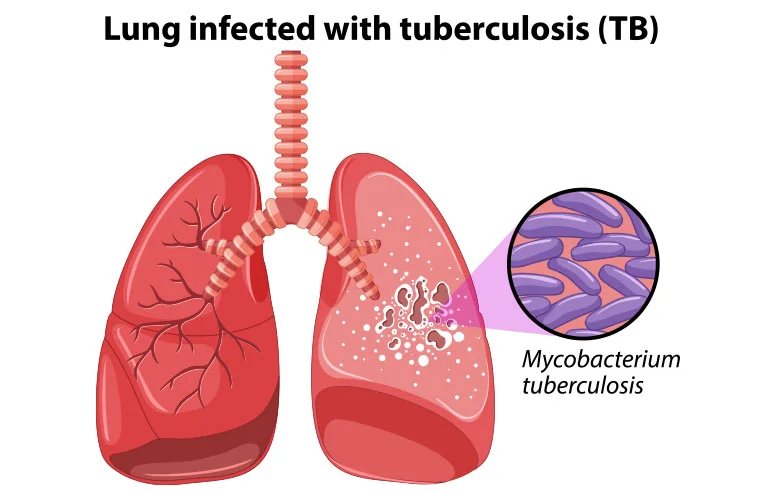- Home
- Departments
Departments Of Tuberculosis
Tuberculosis(TB)Tuberculosis (TB) is a contagious bacterial infection caused by the bacterium Mycobacterium tuberculosis. It primarily affects the lungs (pulmonary TB), but it can also affect other parts of the body (extrapulmonary TB), such as the kidneys, spine, and brain. TB is a major global health concern, with millions of new cases and deaths reported each year.
Transmission: TB is primarily spread through the air when an infected person with active TB coughs, sneezes, or speaks, releasing infectious droplets into the air. Close and prolonged contact with an infected individual increases the risk of transmission.
Latent TB Infection (LTBI): Not everyone infected with M. tuberculosis develops active TB disease. In many cases, the immune system is able to control the infection, resulting in latent TB infection (LTBI). People with LTBI do not have symptoms of TB and are not contagious, but they may develop active TB disease if their immune system becomes weakened.
Active TB Disease: Active TB disease occurs when the immune system is unable to control the TB bacteria, leading to symptoms and clinical manifestations of TB. Common symptoms of pulmonary TB include coughing, chest pain, coughing up blood, fatigue, fever, night sweats, and weight loss. Extrapulmonary TB may present with symptoms specific to the affected organ or system.
Diagnosis of Tuberculosis:
Diagnosis of TB typically involves a combination of medical history, physical examination, tuberculin skin test (TST) or interferon-gamma release assay (IGRA) to detect LTBI, chest X-ray or computed tomography (CT) scan to evaluate for pulmonary involvement, and microbiological testing of sputum or other bodily fluids to confirm the presence of M. tuberculosis.
Treatment of Tuberculosis:
Treatment of TB involves a multidrug regimen of antibiotics to kill the TB bacteria and prevent the development of drug resistance. The standard treatment regimen for drug-susceptible TB consists of four first-line antibiotics—isoniazid, rifampin, ethambutol, and pyrazinamide—taken for a period of six to nine months. In cases of drug-resistant TB, additional antibiotics may be required, and treatment duration may be extended.
Prevention of Tuberculosis:
Prevention of TB involves a combination of strategies, including vaccination, screening and treatment of latent TB infection, infection control measures to prevent transmission in healthcare settings and congregate settings, and addressing social determinants of health that contribute to TB risk, such as poverty and inadequate access to healthcare.
Overall, tuberculosis remains a significant public health challenge worldwide, but with early diagnosis, appropriate treatment, and comprehensive prevention strategies, it is a preventable and treatable disease. Efforts to improve TB control and eliminate TB as a public health threat are ongoing globally.

